Galle in Sri Lanka is unlike any other city we've seen in this country. Here you'll find Galle Fort, a fortified old town framed by a massive wall. Inside the wall, you'll find narrow alleys and charming colonial-style houses. If you're visiting Sri Lanka, don't miss this little gem!
Table of contents
Galle in Sri Lanka
Galle is the capital of the southern part of Sri Lanka, located 110 kilometres south of Colombo. The city is best known for the Galle Fort, the fortified city, which was first built by the Portuguese in the late 16th century. The Dutch then took over in the 17th century, building a fortified and beautiful colonial-style city.
Thanks to intensive reconstruction work, this is still a very beautiful city, which was added to the UNESCO World Heritage List in 1988. We walked around much of the city in the oppressive heat, admiring all the beautiful and charming white houses.
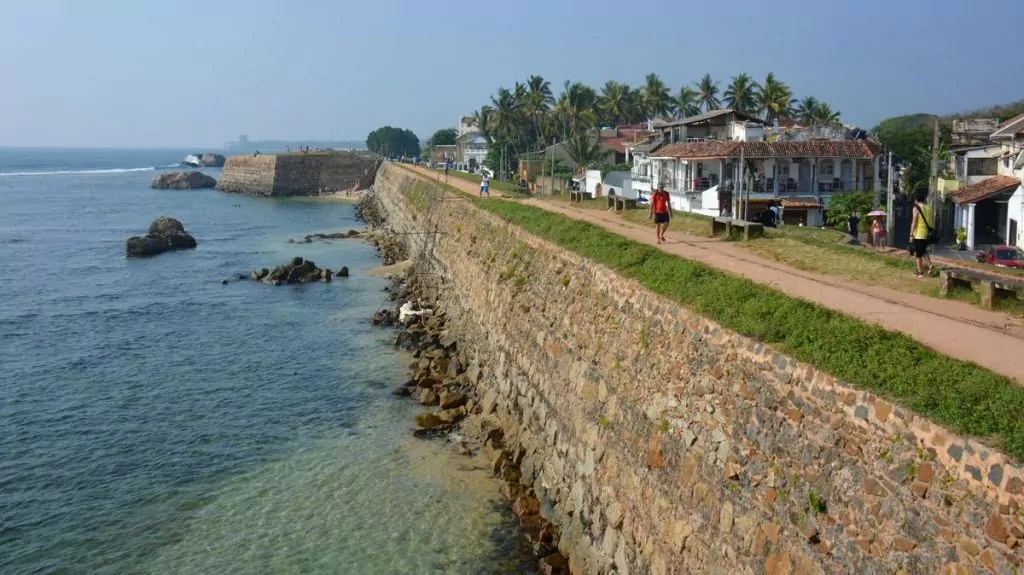
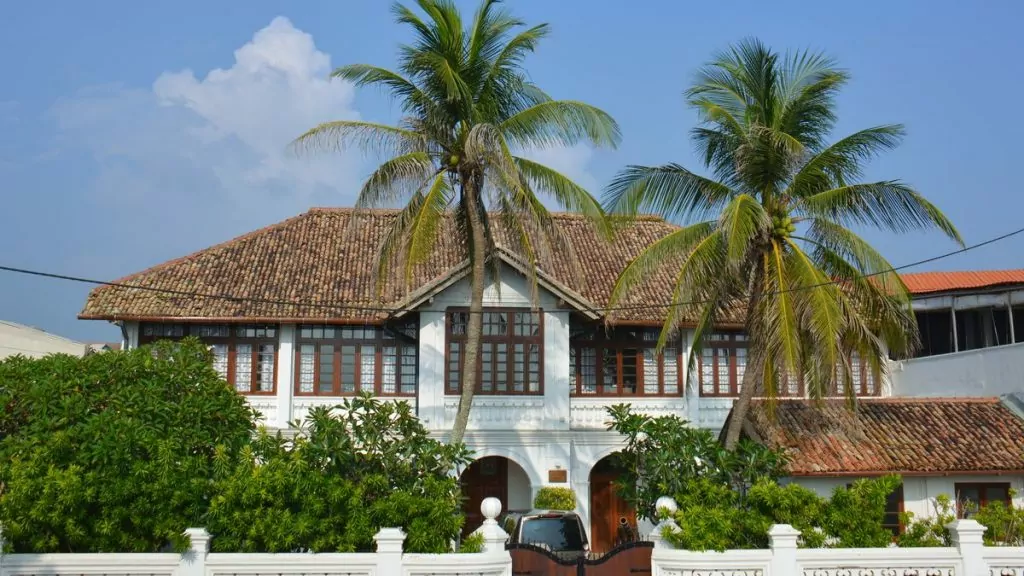
Just outside the fort and the old town there is also a cricket stadium, Galle International Stadium. Outside, lots of buses were parked, and also an occasional tuk tuk.
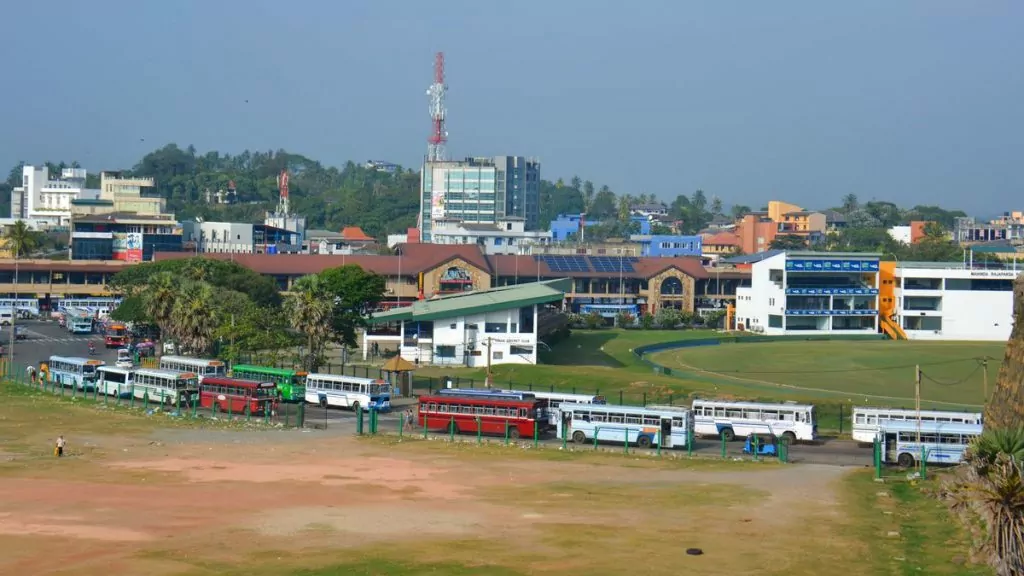
Strong bile
The wall around Galle Fort is impressively long, and here and there you can see where the cannons once stood. We walked for a while along the wall, and came among other things to the nice lighthouse, which was erected here in 1939.
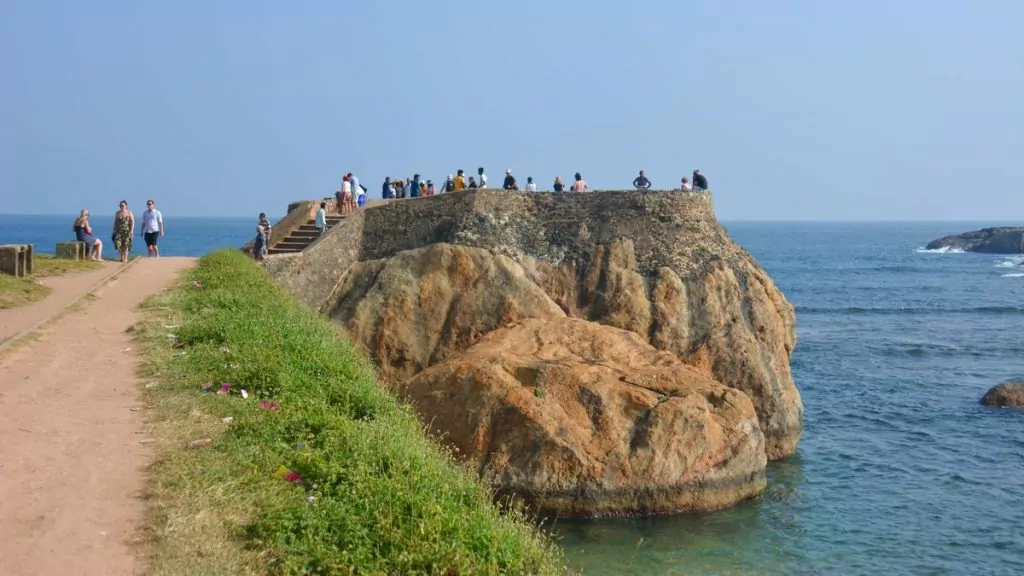
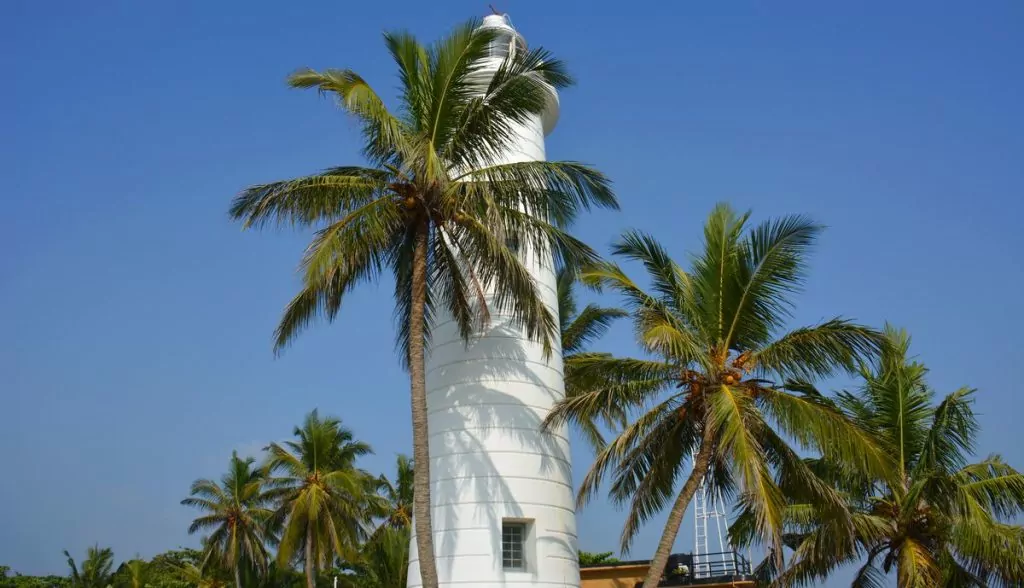
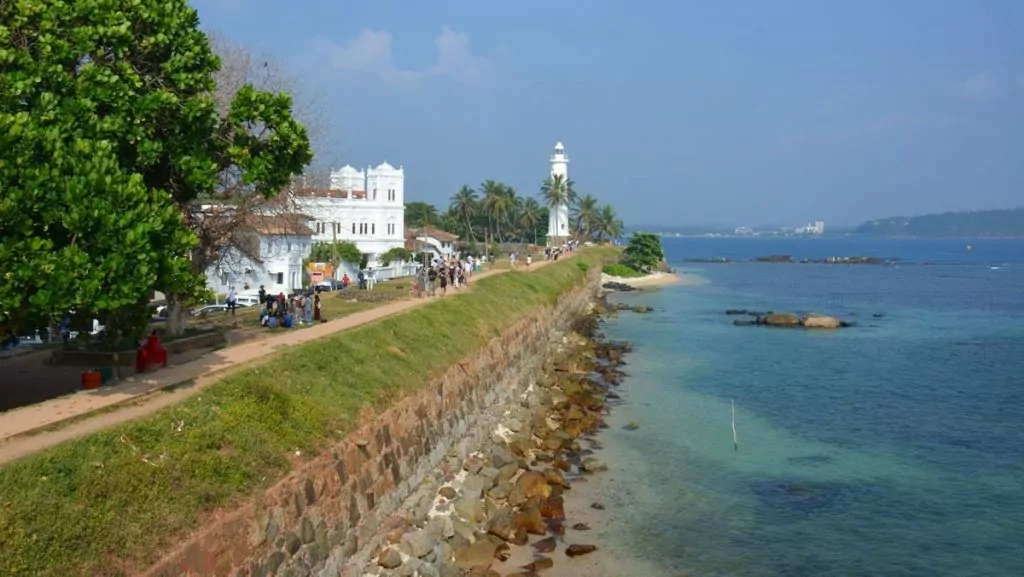
We walked on to the bell tower, which was built in 1833. The bell itself was a gift from a grateful patient who wanted to honour the doctor Dr Anthonisz. The doctor lived in the 19th century and belonged to the minority Burghers, the ethnic group in Sri Lanka descended from the Portuguese, Dutch and British.
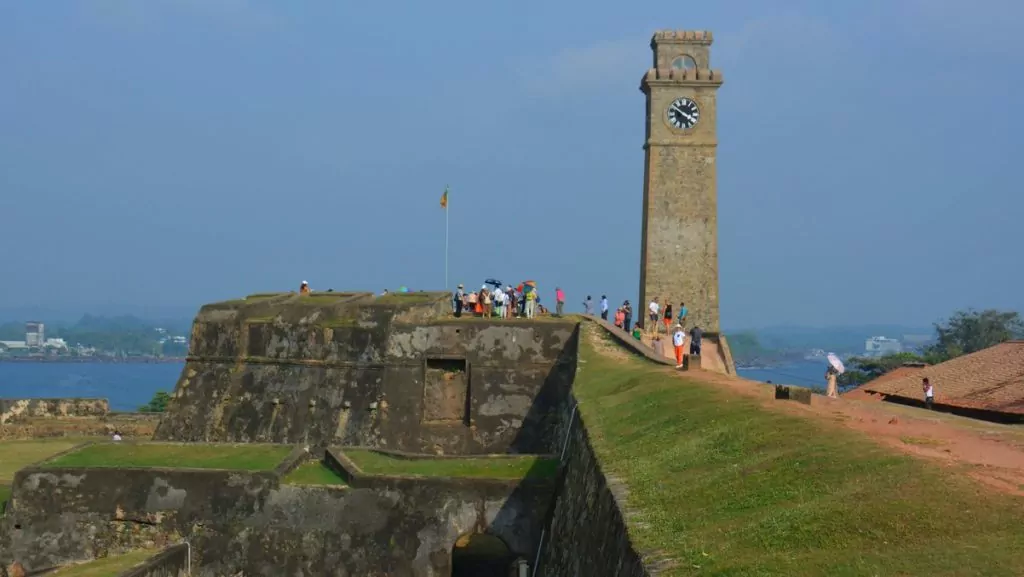
Just below the bell tower you can also see a statue of a Dutch soldier and a Sri Lankan labourer.
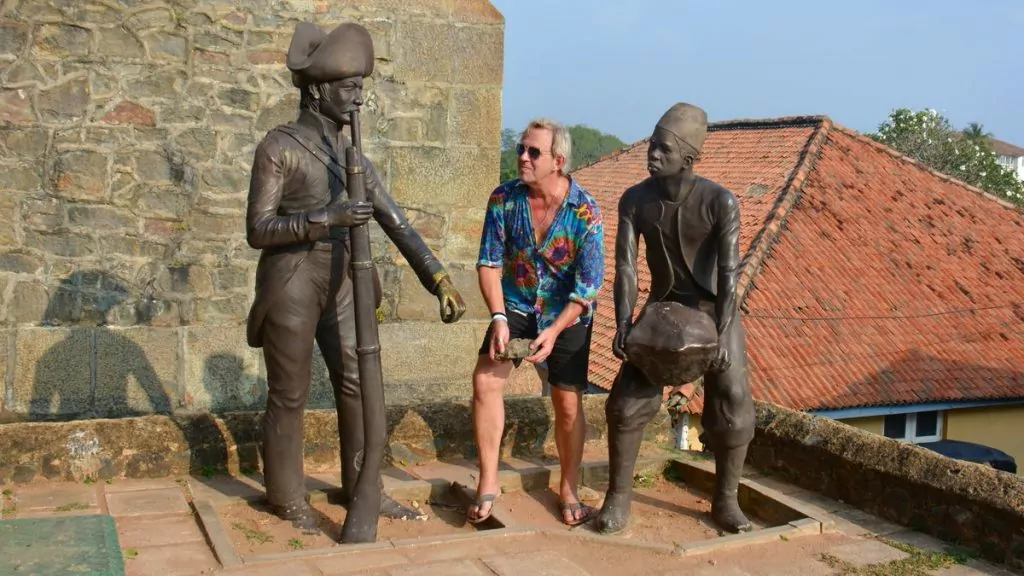
Galle Fort has a colourful history, and today the population is both multi-ethnic and multi-religious. Within the walls are two churches, the Dutch Reformed Church and All Saint's Church, and a mosque, the Meera Mosque.
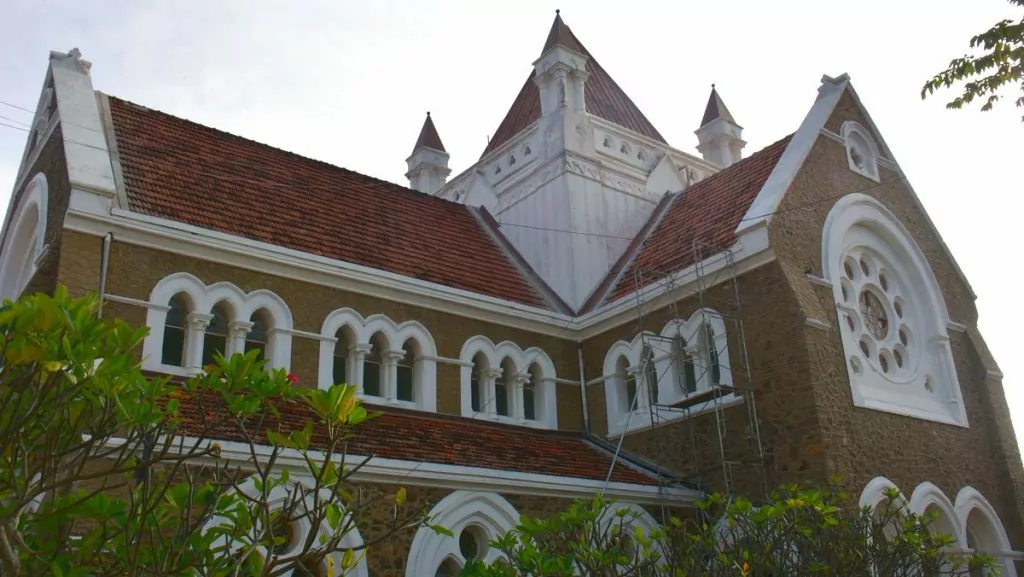
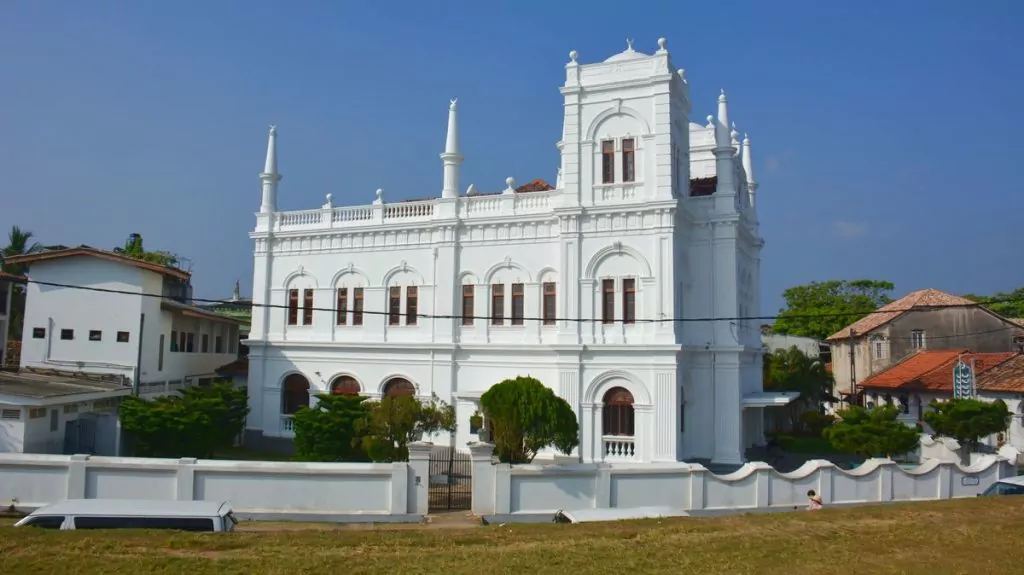
Beautiful beaches
You might not visit Galle in Sri Lanka primarily for the beaches, but if you want to sunbathe and swim, you can do so. There are several smaller beaches around the city and the water here is crystal clear.
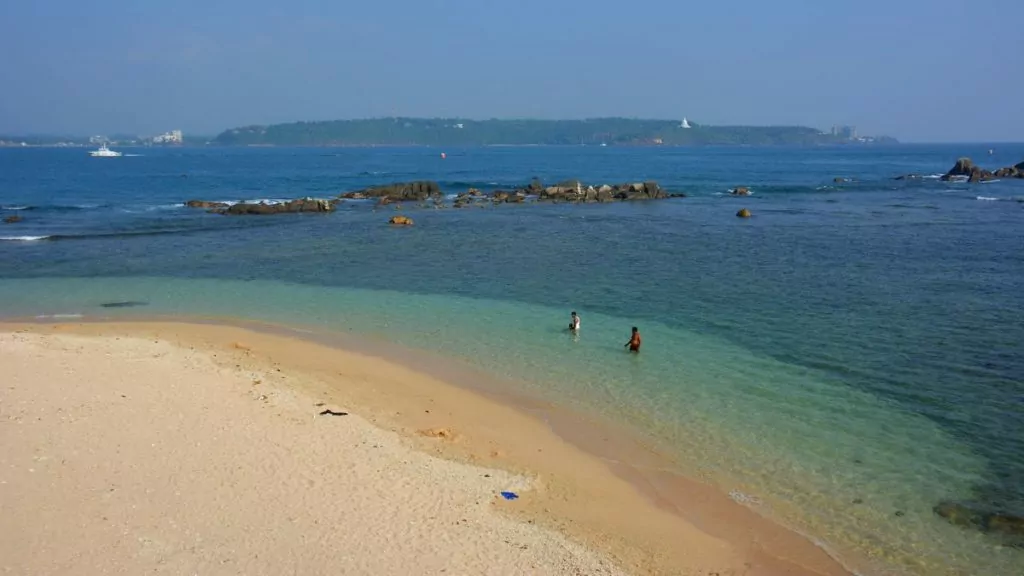
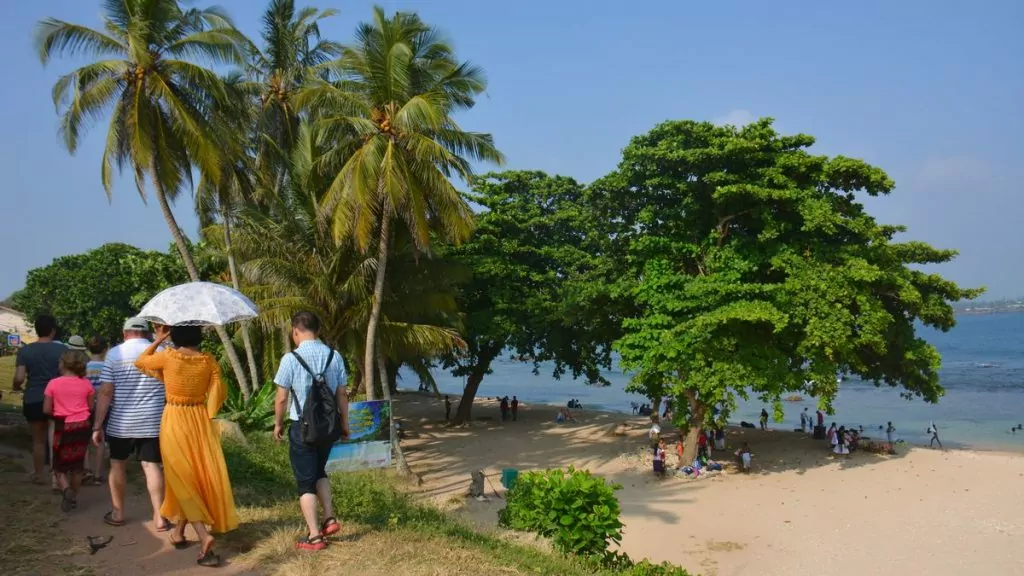
Shopping: precious stones and clothes
Inside the walled city there are lots of small shops. Gemstone shopping is particularly popular in this part of Sri Lanka and there are plenty of shops selling sapphires, topaz and other stones. There are also plenty of shops selling clothes, jewellery, art, crafts and souvenirs. For us, it was some cool summer clothes, and our friends bought a ring with a small blue topaz.
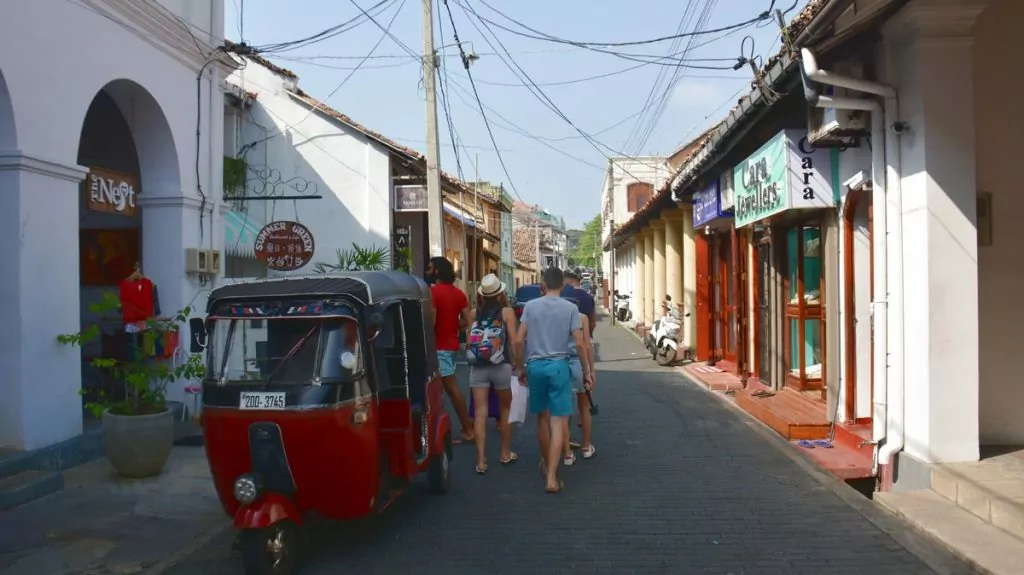
Many restaurants
We had two meals in Galle: lunch and dinner. At lunch we found a place called Summer Green. Here you sit in a nice relaxed environment among green plants and pink flamingos.
Here we ordered chicken wraps and prawn curry, and everyone was very happy. Tasty and well cooked! We must say that the restaurants in this city feel a bit more "modern" than what we have experienced in other places in Sri Lanka.
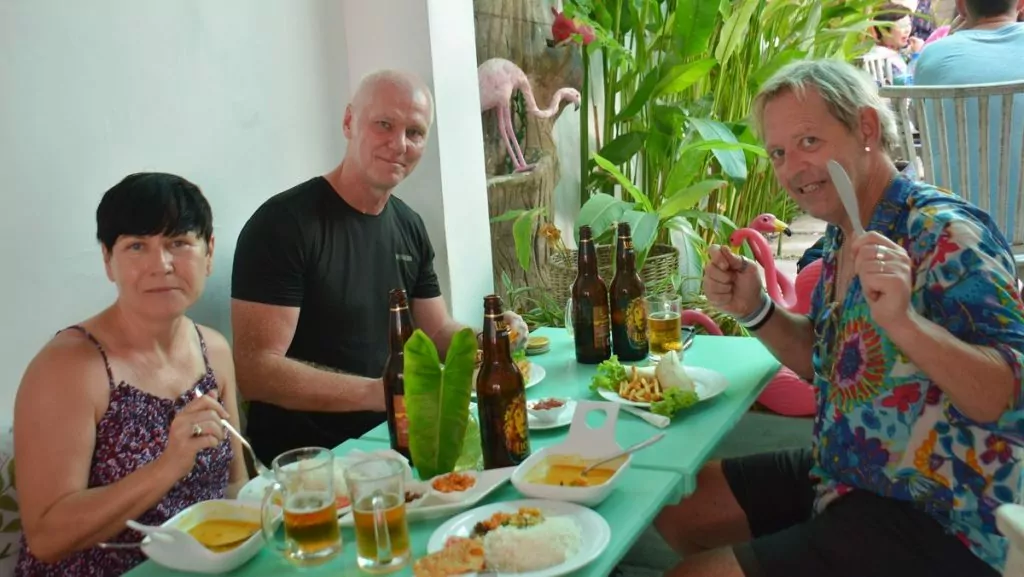
When it was time for dinner, we found the large white building called "Old Dutch hospital", which is a former Dutch hospital. There are now lots of different restaurants, both on the ground floor and upstairs.
We were not completely satisfied with our order - the starter was good, but the main courses did not live up to the price at all. On the other hand, there are many places to choose from here. An advantage is also that all the restaurants seem to have rights to serve beer and wine, which not all other restaurants in the city have.
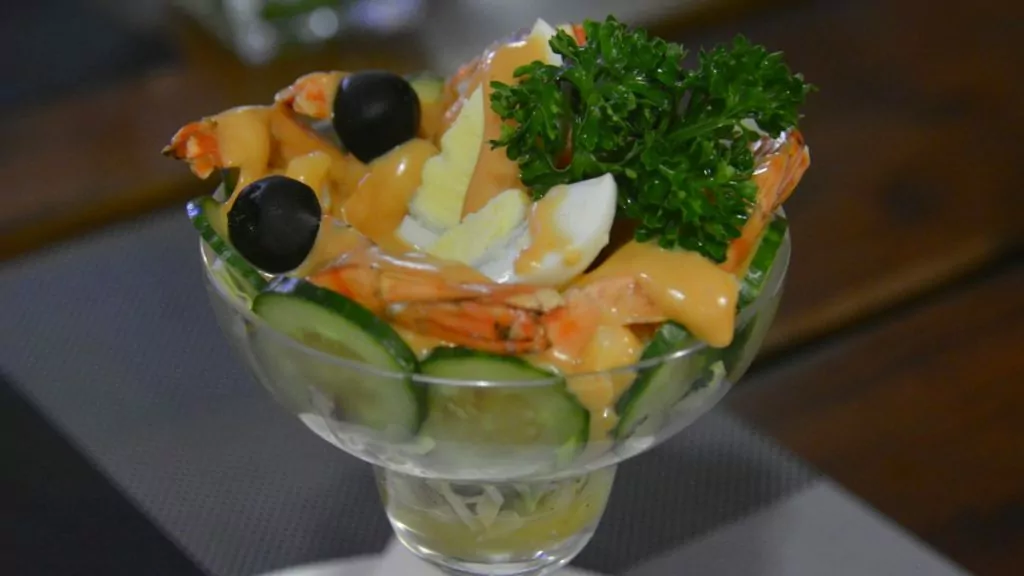
Cosy Guest house
If you are planning to travel to Galle, we can really recommend the Beach Haven guesthouse. This family-run guesthouse is not only charming and affordable (we paid around 350 SEK per double room), but also perfectly located in the centre of the walled city.
The rooms are personally decorated and the family, who speak good English, are very keen to make you feel comfortable. Breakfast on the balcony in the morning was a perfect end to our visit to Galle in Sri Lanka.
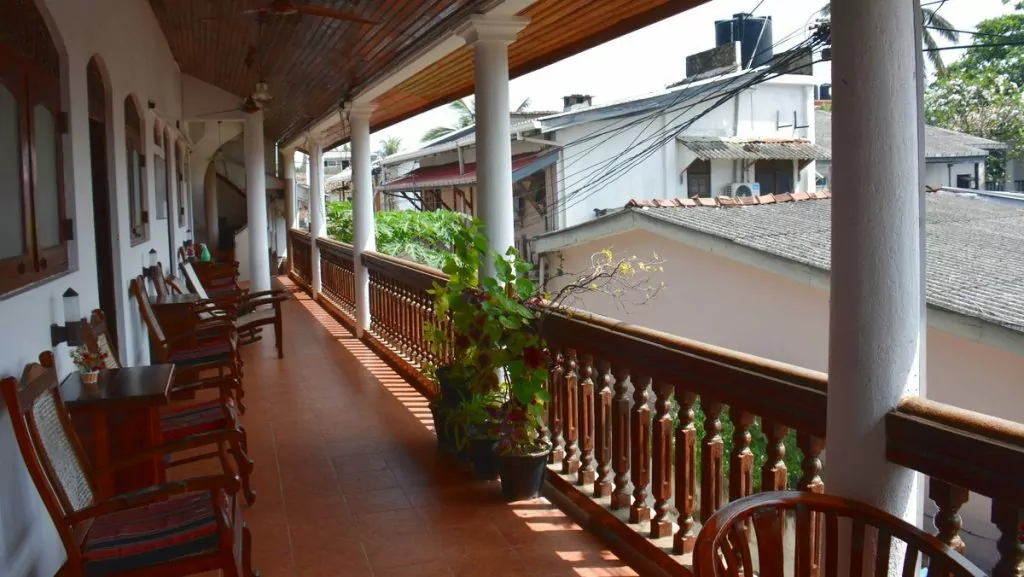
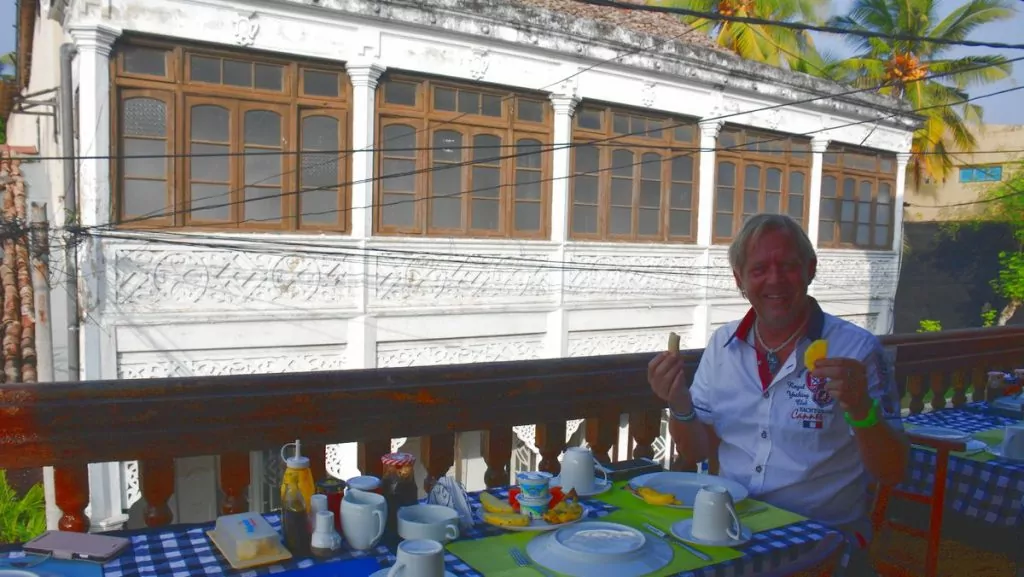
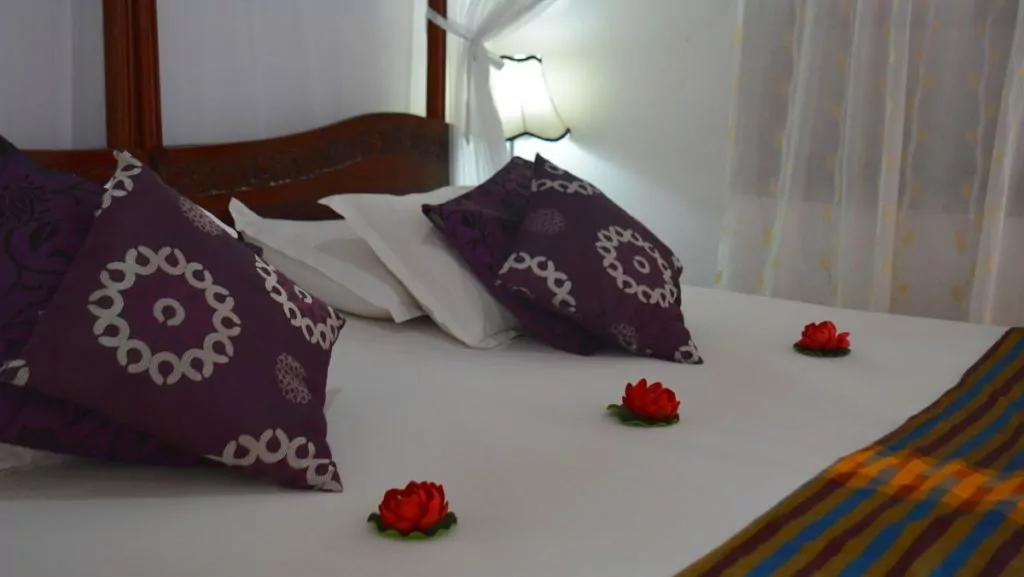
See more in Sri Lanka
If you want to see more of Sri Lanka, there is plenty to choose from. Here are some examples of interesting places to visit, without having to travel too far from Galle:
- Weligama suitable for those who want to sunbathe, swim and surf
- Madu Ganga River offers an exciting river safari
- Ella is a charming tourist resort where you can take the famous train to the holy city of Kandy.
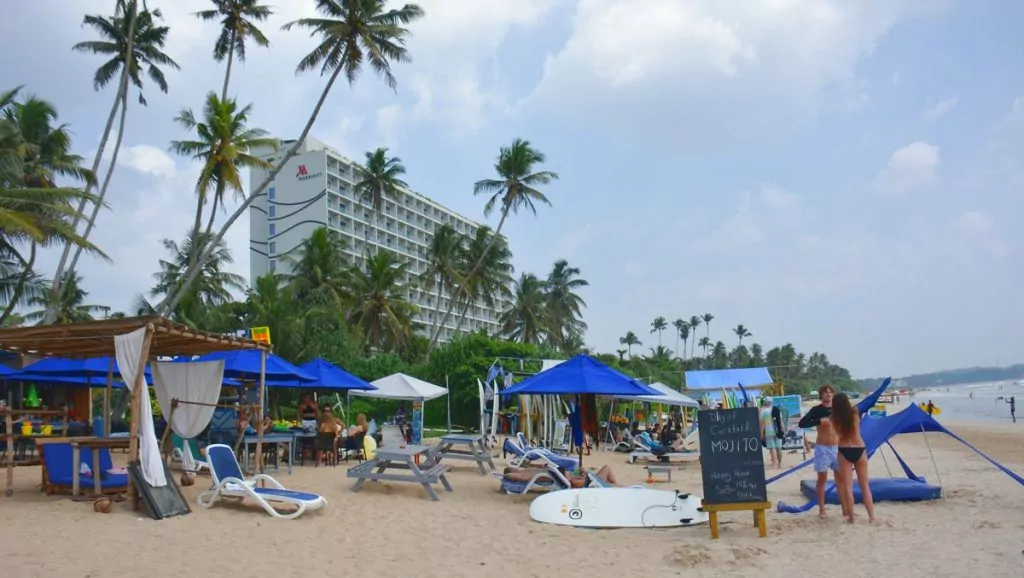
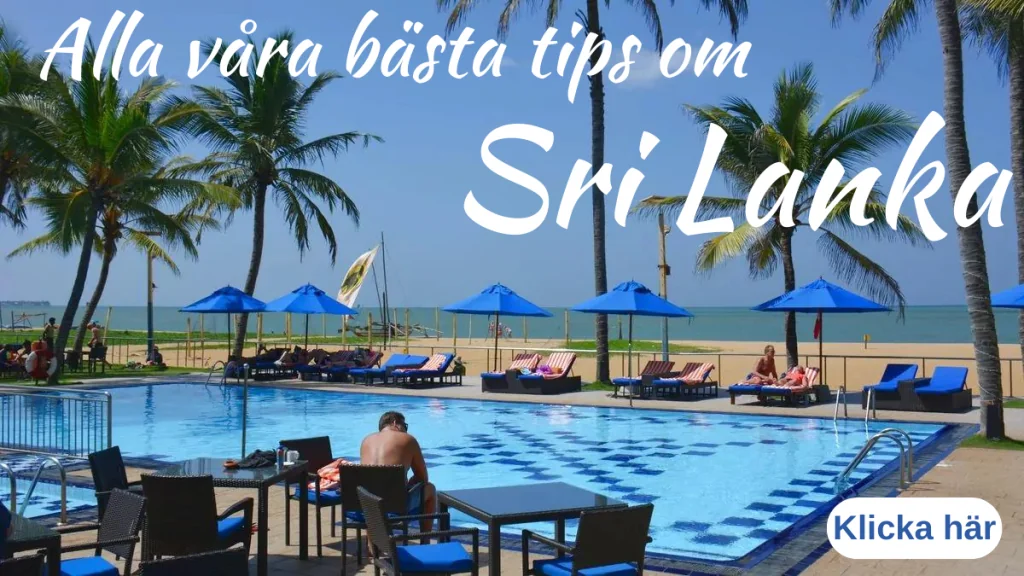
Facts about Galle in Sri Lanka
- Country: Sri Lanka
- Provins: Southern Province
- Population: 93 000 (2012)
- Location: Galle is located at the southwestern tip of the country, about 110 kilometres south of Colombo.
- Unesco World Heritage Site: The older parts of the city and its fortifications were added to the UNESCO World Heritage List in 1988.
- Attractions: Galle Fort (The Fort), Lighthouse, Clock Tower, Dutch Reformed Church, All Saint's Church and Meera Mosque.
History of Wales
- 5th century: Galle is mentioned as early as 545 in the geographical works of Kosmas Indikopleustes.
- 14th century: When the Arab-Berber traveller Ibn Battuta arrived in Sri Lanka, which he then called Qali, Galle was the country's main port.
- 15th century: Around 1409, the Chinese admiral Zheng He visited the city. He brought with him a 'stele' (decorated stone with inscriptions), which later disappeared, but was rediscovered in 1911 and is now in the National Museum in Colombo.
- 16th century: In the 16th century, a group of Portuguese sailors, originally destined for the Maldives, got lost in a storm. These Portuguese built the first fortification in Wales, called the Black Fort, which includes three bastions and a moat.
- 17th century: In 1640, Galle fell to the Dutch. The fortification was now expanded and greatly improved, with a total of 14 bastions. The town became the administrative capital of the Dutch and during this period it took on a distinctly Dutch flavour.
- 18th century: With the completion of the seaward ramparts in 1729, the city reached a kind of zenith. In 1769, Galla was handed over to the British after the fall of Colombo.
- Present tense: Galle was severely affected by the 2004 tsunami, which wreaked havoc on the city and led to the loss of many lives. Today, the city has been rebuilt.
Travelling to Galle
- Car from Colombo: It takes just over 2 hours to drive from Colombo to Galle (125 kilometres). You can hire a car yourself (international driving licence required), but the most common way is to hire a car with a driver.
- Trains: You can travel by train from the capital Colombo and from Matara in the south of the country.









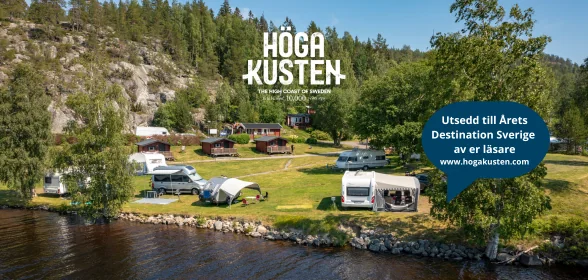


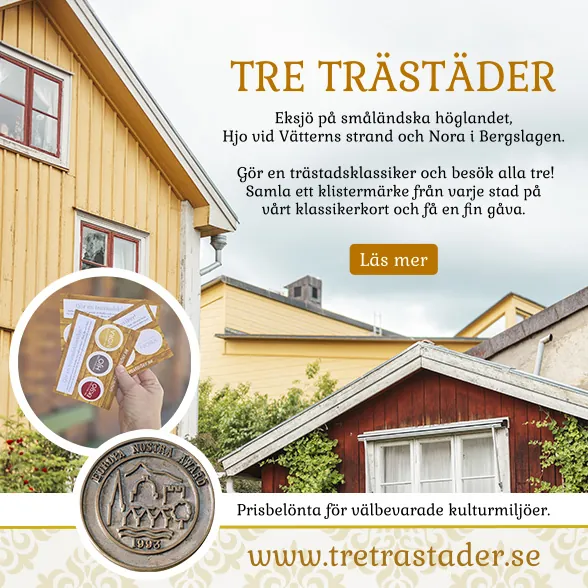
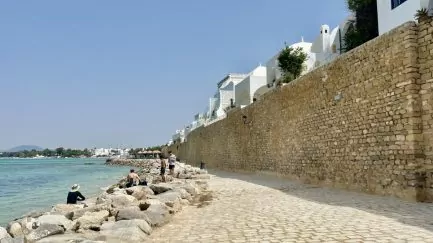
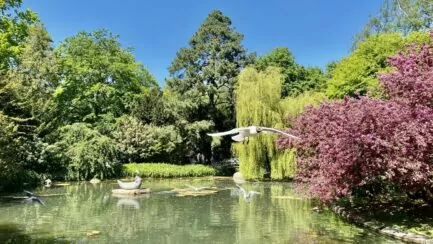
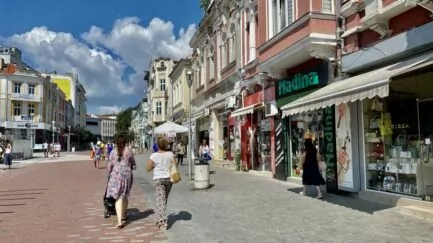
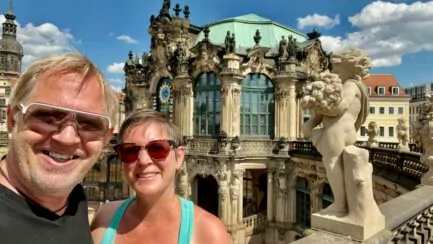
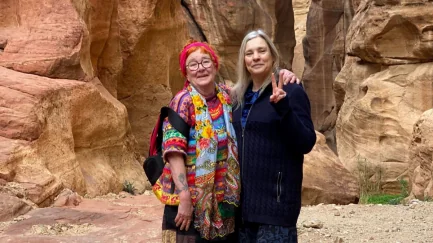



Travelling happiness says:
Hey, guys
Galle is one of my favourites in Sri Lanka. Wonderful atmosphere 🙂
Enjoy your trip!
/ Mette
05 January 2019 - 9:32
Helena says:
Isn't Galle nice? 🙂 Keep up the good work!
05 January 2019 - 13:21
Johnny Friskilä says:
Good accommodation tips. I have never stayed in Galle itself, but most recently in Beruwala and once before at the colonial hotel Closenberg a few kilometres east of Galle. Really nice place, but a bit more expensive.
Galle is a tourist town, but a bit on the luxury side, which means that you have to make a little more effort when it comes to food. However, I find it boring when the shopping becomes only obvious souvenirs. There is probably not a single Sri Lankan who would buy something in Galle.
05 January 2019 - 10:55
Helena says:
This guesthouse is super nice! Clean, cosy and personal! Can really recommend! I know what you mean about the shopping being touristy. For us it was ok to buy some summer clothes 😉.
05 January 2019 - 13:24
GeddFish says:
I have no idea about Sri Lanka, but I'm happy to go with you in terms of pictures and text.
I have heard that it is very green and therefore freshly beautiful.
Enjoy and Trettondagsafton hugs from a 4-plus degree and sunny Lidköping /Gerd
05 January 2019 - 10:58
Helena says:
Glad you want to travel "with us" through Sri Lanka! 🙂 Have a good time at home in Sweden!
05 January 2019 - 13:25
4000mil says:
Agreed! Galle is super cosy. But infinitely hot when we walked around there. Luckily you had the hotel close by. 🙂
05 January 2019 - 11:02
Helena says:
It was hot when we were here as well and yes, very nice with a hotel close by 🙂 ).
05 January 2019 - 13:26
Ruth in Virginia says:
I was wondering / Do you pay room and board for your driver?
Seeing rows of buses in a photo - Are they tourist buses?
05 January 2019 - 11:47
Helena says:
We don't pay room and board for the driver. It was very clear when we rented that it is included in the price and we don't have to think about it. He provides his own food and accommodation. The buses in the photo - I can't answer that.
05 January 2019 - 13:27
Ditte says:
Galle is clearly one of our favourite cities in Sri Lanka. Glad you also liked the city and around here there is a lot to see and experience. Time is sometimes the limiting factor.
Lovely pictures where I partly recognise myself.
05 January 2019 - 13:27
Helena says:
Glad you also like Galle Ditte! Super nice!
05 January 2019 - 13:29
Maria / Magnolia Magis says:
Hi hi hi first read "the best city"...fortified it was, but seems good too! Lighthouses are wonderful! Something we like to visit, maybe a lot because they are located nicely.
The veranda at the guesthouse was not bad either! That's what I want, when we find the little cottage, barn or something...:D
05 January 2019 - 18:02
Helena says:
Haha, "the best city" might also have been a good name 🙂 .
06 January 2019 - 3:24
BP says:
An interesting city I would say and different. I read that it is a typical tourist town, so the restaurants have to step up their game. Oh that the prices then automatically also "tighten" is logical. But 350 kronor for such a nice room at Beach Haven is ridiculously cheap.
05 January 2019 - 21:31
Helena says:
The room was really affordable! Felt very nice and there was everything we needed, including excellent WiFi.
06 January 2019 - 3:27
Ann-Louise Paulsson says:
It really looks great! I especially like the picture of the nice lighthouse.
05 January 2019 - 22:43
Helena says:
Fantastically nice here! 🙂
06 January 2019 - 3:27
Mr Christer says:
Hi, travelling to Sri Lanka on Thursday. I have read that there are a lot of thieves who use your travel money. Have you noticed anything like that.
06 January 2019 - 2:36
Helena says:
Great that you are going to Sri Lanka! No, we haven't noticed anything like that at all! Neither seen, heard nor noticed. It feels like people are very friendly! Of course, as always, you should keep track of your stuff, but we have felt safe here. You may need to consider that many people try to make money on you, get tips etc. Completely understandable perhaps, but you have to choose where you want to spend your money. Basic prices are very low but tourist prices are sometimes much higher.
06 January 2019 - 3:36
Mr Christer says:
Thanks for the reply. Will follow your adventures as we plan to be there for a month.
06 January 2019 - 23:39
Ewa EsbergPersson says:
Agree with you about Sri lanka is amazing live in negombo and much further we will not as the husband roads drive any vehicle down here,despite his international driving licence.
Been here since 17 November, staying until 17 February this time. But will return if health permits. Last trip here we were 4 weeks.
Please tell us about your driver in more detail the price and how long you are using him Kind regards, Ewa
06 January 2019 - 8:36
Helena says:
How wonderful to spend such a long time in Sri Lanka! You don't have to drive yourself, rent a car with a driver! We will tell you more about our driver tomorrow. We paid 750 SEK per day, but that was for a large van (9 seats) and it included accommodation for the driver, insurance, petrol and free miles. Also, we booked through an intermediary (the company at the airport) which made it a bit more expensive. If you book a smaller car and directly from a company, it should be possible to get a much lower price. Our driver can be reached at askshanitours at gmail.com (but he may only have a large van). Check with your hotel or ask anywhere in the centre. There are plenty of cars with drivers!
06 January 2019 - 18:44